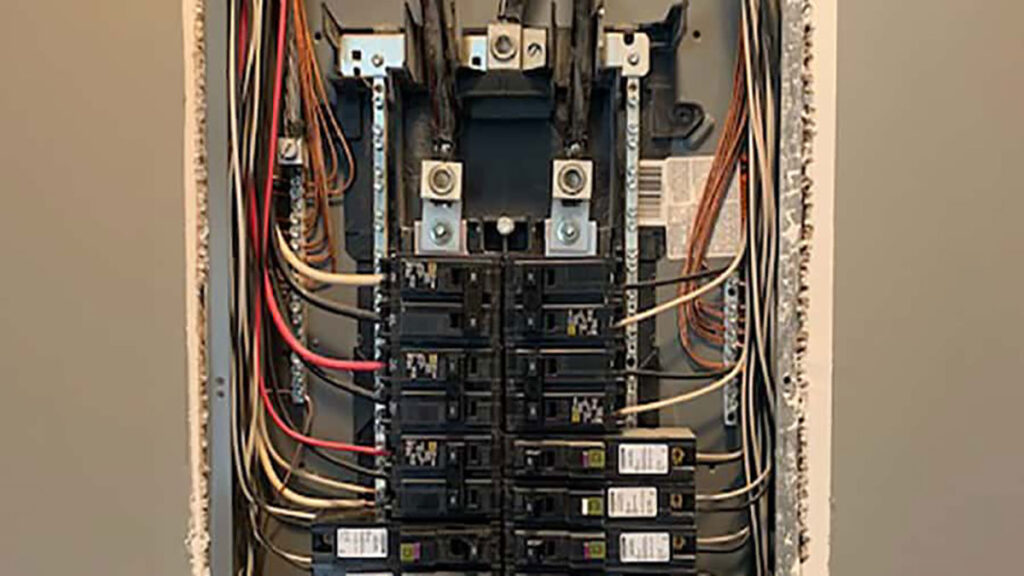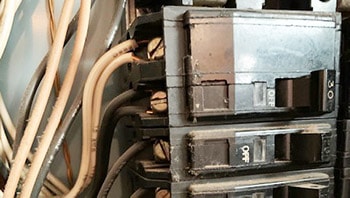If you’ve recently had a home inspection performed on the house, you wonder if home inspectors open electrical panels. The home inspector may or may not have opened the electrical panel for inspection. You may be left wondering why or why not. This is a hotly debated topic as to whether or not a home inspector can (or should) open an electrical panel box.
So, can home inspectors open electrical panels?
Yes, a home inspector can (and should) open an electrical panel, provided the electrical panel cover can be removed safely and without damage to the property. However, according to industry Standards of Practice, a home inspector is not required to remove any panel cover where the inspector deems safety is an issue.

Let’s examine this further. But first, we need to understand the industry Standards of Practice. Home inspectors are licensed in most US states. However, there are some states where licensing for home inspectors is not in place. For a complete list, see ASHI Requirements by State.
There are two leading certification organizations for home inspectors. The International Association of Certified Home Inspectors (InterNACHI or NACHI) and the American Society of Home Inspectors.
Both organizations have similar Standards of Practice. Let’s explore these standards.
What the Standards of Practice Say About Can Home Inspectors Open Electrical Panels
Section 3.7 Electrical of the NACHI Standards of Practice states that in electrical panel inspection in I.H. the inspector shall inspect: “panelboards and overcurrent protection devices (circuit breakers and fuses).”
However, IV.C. states the inspector is not required “to remove panelboard cabinet covers or dead fronts.”
In the ASHI Standards of Practice under 7. Electrical 7.1 states under A5 to inspect the interior components of service panels and subpanels.
There is nowhere under the ASHI Electrical Standards of Practice that instructs a home inspector not to open an electrical panel except under 13.F.1 General Limitations and Exceptions, which states:
“The inspector is not required to perform procedures or operations that will, in the professional judgment of the inspector, likely be dangerous to the inspector or other persons, or to damage the property or its systems or components.”
So what does this all mean? Let’s examine some scenarios where an inspector may or may not open an electrical panel.
Why Would a Home Inspector Open an Electrical Panel
The only way to accurately inspect the panel board is to open the panel to observe the following:
- Service entrance connections – are where the service entry wires connect to the main service panel, usually at the main service disconnect.
- The main service disconnect breaker (usually inside the main electrical panel) cuts all power to the service panel.
- The panel board components – include the bus, neutral, and grounding bars.
- Breakers or fuses – breakers or fuses used to connect power to the branch circuit wiring.
- Bonding – Other metallic systems connected to the grounding electrode system.
- Wiring and wiring connections – branch wiring for lights, outlets, fixtures, and mechanicals connected to the breakers or fuses.

The home inspector can visually inspect the panel box for defects by opening the electrical panel. This is the only way to see defects such as burned wiring, rust or burn marks on the bus bar, double-tapped wiring connections, improper bonding, etc.
The home inspector can then cite these defects in the inspection report and recommend that the defects be examined and repaired as necessary by a licensed electrician.
Only licensed electricians should perform electrical work. Of course, you must check with your state about who can perform electrical work.
The National Electric Code (NEC) provides guidelines for electrical installations. NEC standards are not federal law. Local governments can adopt NEC standards or create and enforce their electrical code.
Since electrical codes can vary from location to location, most home inspectors adhere to their Standards of Practice and NEC standards when performing home inspections.
For more information on electrical and electrical panel defects, see our article Signs Your Electric Panel Needs an Upgrade – Safety & Costs to Replace.
Why a Home Inspector Would Not Open an Electrical Panel
There are some exceptions where a home inspector would not remove an electrical cover panel. These include:
- Inaccessible electrical panels.
- Painted or caulked panel covers where removing could cause damage to the property wall if removed.
- Safety concerns for the home inspector or others present.
When inspecting an electrical panel, there will be instances where the electrical cover panel can’t be opened. Electrical panels blocked by furniture, equipment, or other obstructions or not having the proper clearance are not required to be opened.
An electrical panel should have 3 feet of workspace on all sides of the electrical panel. This is often not the case in older homes. I’ve personally opened many panels with far less workspace clearance.
There will also be instances where the electrical panel box has been painted over, thus sealing the panel box cover to the wall. Most home inspectors will attempt to cut along the edge of the electrical panel box to break the seal. However, sometimes these attempts are not successful.
Home inspector licensing requirements (where present) vary from state to state. Often, these requirements offer little training in many areas of home inspections. You can obtain a home inspector’s license in many states with minimal training. Take an online course and pass a state test, and congratulations, you’re a home inspector!
This leaves advancing training for electrical systems to organizations like NACHI or ASHI. Inexperienced home inspectors should not remove electrical panel covers until proper training is obtained.
A valid argument could be made that an inexperienced home inspector should not be allowed to perform a fee-based inspection. However, since most home inspectors are independent contractors or sole proprietors, nothing prevents them if their state licenses them to perform home inspections.
This is also one of the reasons many experienced home inspectors are pushing for more stringent entry requirements into the home inspection field. Inexperienced and poorly qualified home inspectors often enter the field, offering low prices for a cheap inspection. This often creates unreal expectations and eventually drives the new inspector out of business because they are not trained.
These are just some scenarios where home inspectors may not open an electrical panel. When this is the case, the home inspector should note in the inspection report that the electrical panel cover was not opened, cite why, and refer to the panel box for examination by a licensed electrician.

What Safety Issues May Prevent a Home Inspector from Opening a Panel
- Live dead front cover – Before a home inspector touches an electrical panel box, they should use a circuit tester to determine if an electrical current is in the metal dead front cover. This can occur when a live wire inside the box touches the panel cover.
- No main service disconnect – many older panels do not have main service disconnects. The main service disconnect will cut all power to the breakers and branch wiring, allowing the home inspector to remove the cover panel for visual inspection. This is not to say that a home inspector will not remove the cover on a live panel box, only that this could be considered a safety reason why a home inspector would not remove one.
- Panel boxes with known safety issues – some older panel boxes, such as Federal Pacific Stab-Lok and Zinsco panels, have known safety issues linked to house fires. Depending on the home inspector, many will not remove these cover panels and immediately recommend a licensed electrician examine the panel box.
- Rust or water present – if rust or water is present on or near the electrical panel, a home inspector can immediately recommend that a licensed electrician examine the panel box. This yields a potentially life-threatening situation.
In closing, when possible, a home inspector should remove the cover from the electrical panel to visually examine the components. If you’ve ordered a home inspection and your inspector did not remove the cover, ask them why.
Best practices: the home inspector should include pictures of the panel cover on and off as proof of performance. In my home inspection reports, I have a photo of the front of the box with the cover on, a picture of the data plate on the door with the brand name visible, an image of the cover off, the service entry connections, the left side, and right side breaker connections.
This allows the client or owner to see what I see when they are not present for the home inspection. It can also serve as an excellent mental jog if you need to recall a home after several weeks.







